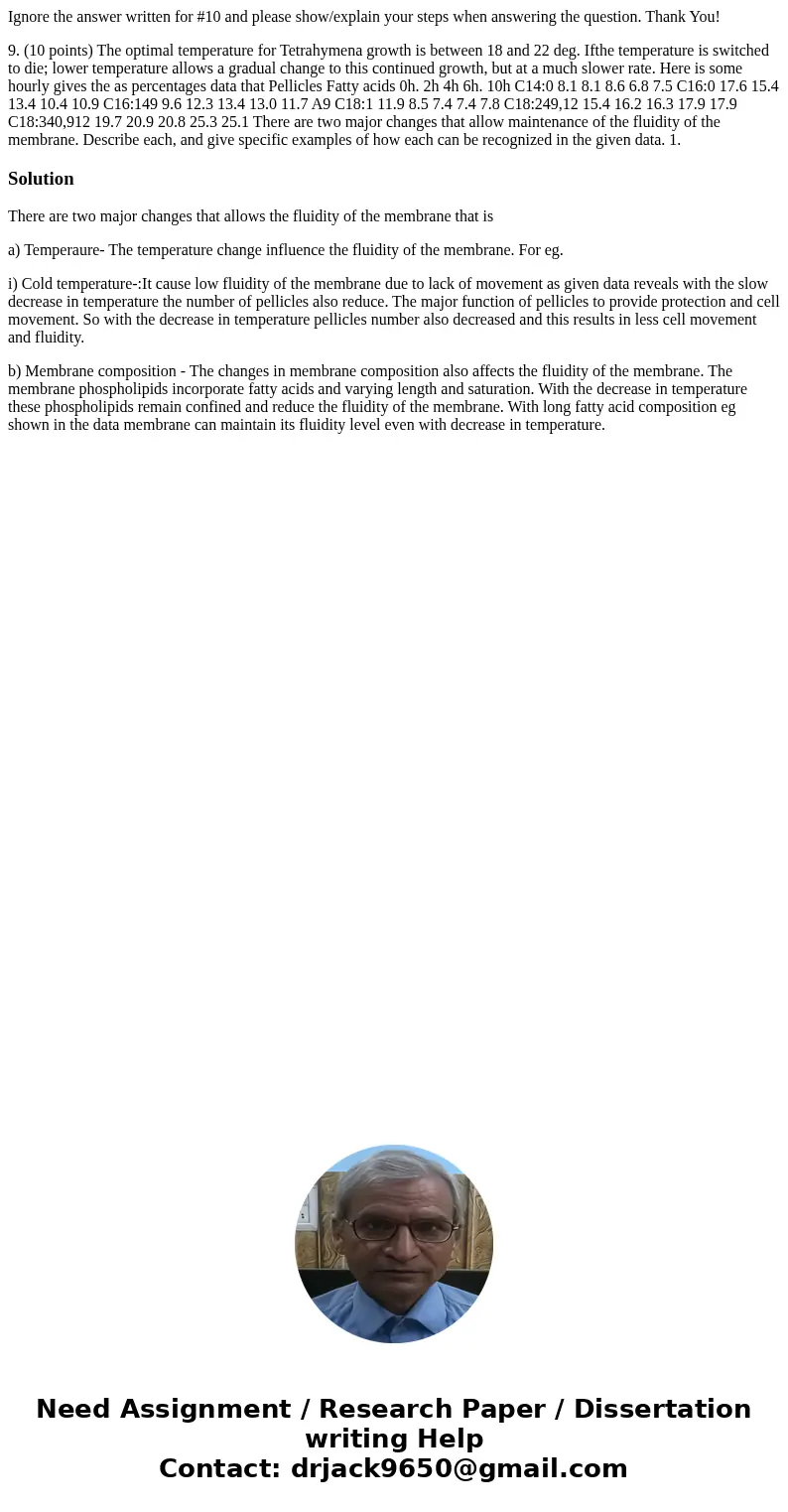Ignore the answer written for 10 and please showexplain your
Ignore the answer written for #10 and please show/explain your steps when answering the question. Thank You!
9. (10 points) The optimal temperature for Tetrahymena growth is between 18 and 22 deg. Ifthe temperature is switched to die; lower temperature allows a gradual change to this continued growth, but at a much slower rate. Here is some hourly gives the as percentages data that Pellicles Fatty acids 0h. 2h 4h 6h. 10h C14:0 8.1 8.1 8.6 6.8 7.5 C16:0 17.6 15.4 13.4 10.4 10.9 C16:149 9.6 12.3 13.4 13.0 11.7 A9 C18:1 11.9 8.5 7.4 7.4 7.8 C18:249,12 15.4 16.2 16.3 17.9 17.9 C18:340,912 19.7 20.9 20.8 25.3 25.1 There are two major changes that allow maintenance of the fluidity of the membrane. Describe each, and give specific examples of how each can be recognized in the given data. 1.Solution
There are two major changes that allows the fluidity of the membrane that is
a) Temperaure- The temperature change influence the fluidity of the membrane. For eg.
i) Cold temperature-:It cause low fluidity of the membrane due to lack of movement as given data reveals with the slow decrease in temperature the number of pellicles also reduce. The major function of pellicles to provide protection and cell movement. So with the decrease in temperature pellicles number also decreased and this results in less cell movement and fluidity.
b) Membrane composition - The changes in membrane composition also affects the fluidity of the membrane. The membrane phospholipids incorporate fatty acids and varying length and saturation. With the decrease in temperature these phospholipids remain confined and reduce the fluidity of the membrane. With long fatty acid composition eg shown in the data membrane can maintain its fluidity level even with decrease in temperature.

 Homework Sourse
Homework Sourse